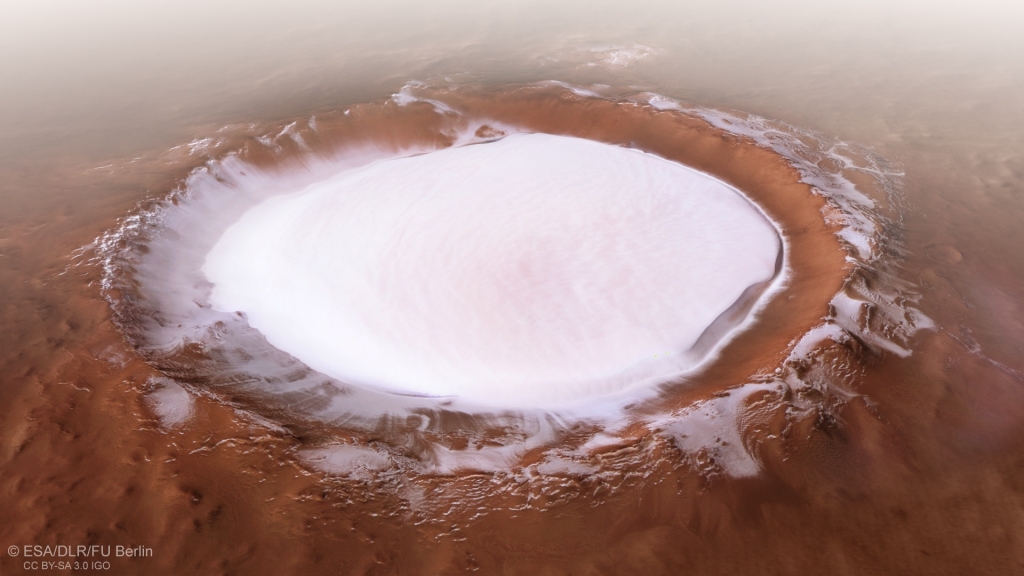This image of the Korolev crater on Mars is based on data from The European Space Agency’s Mars Express orbital spacecraft.
The Korolev crater is 82 kilometers wide and filled with an estimated 2,220 cubic kilometers of ice.

Just another nerd.
This image of the Korolev crater on Mars is based on data from The European Space Agency’s Mars Express orbital spacecraft.
The Korolev crater is 82 kilometers wide and filled with an estimated 2,220 cubic kilometers of ice.

The European Space Agency has awarded an 86 million euro contract to ClearSpace to carry out the first removal of space debris from Earth’s orbit.
According to a ClearSpace press release announcing the contract,
ClearSpace-1’s mission is to develop a robot-like spacecraft with four articulated arms which will ultimately enable space debris to be removed safely. ClearSpace-1’s first task scheduled for 2025 after launching from the Kourou space centre in French Guiana, will be to bring down the Vespa (Vega Secondary Payload Adapter) left by the Vega rocket placed in orbit in 2013, the size of a 112 kg satellite. With its articulated arms, the robot will remove Vespa and move it closer to the earth’s atmosphere where it will burn up and disintegrate.
ESA Director General Jan Wörner said of the plan,
Think of all of the orbital captures that have occurred up until this point and they have all taken place with cooperative, fully- controlled target objects. With space debris, by definition no such control is possible: instead the objects are adrift, often tumbling randomly. So this first capture and disposal of an uncooperative space object represents an extremely challenging achievement. But with overall satellite numbers set to grow rapidly in the coming decade, regular removals are becoming essential to keep debris levels under control, to prevent a cascade of collisions that threaten to make the debris problem much worse.
This is a montage of daily images of the Sun as seen through the European Space Agency’s Proba-2 satellite in 2016.
Each image was created from 30 separate images centred on 01:00 GMT each day, which were processed to enhance the features extending from the solar disc.
Throughout 2016 the Sun’s 11 year activity cycle continued towards its minimum, a period when the number of sunspots, active regions, solar flares and eruptions diminish. Nonetheless, the most active region of last year can be seen in the 17 July image. The bright region close to the centre of the Sun produced eight of the 20 most powerful flares witnessed last year.